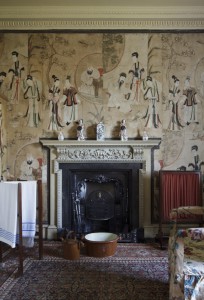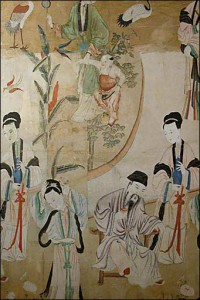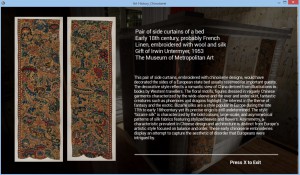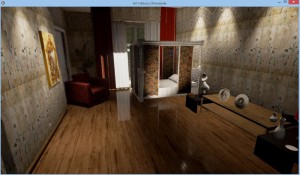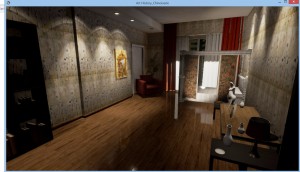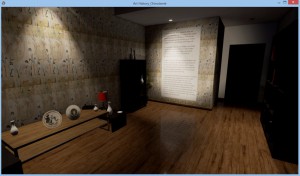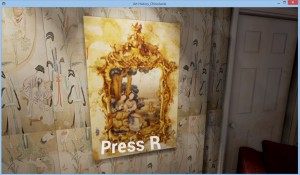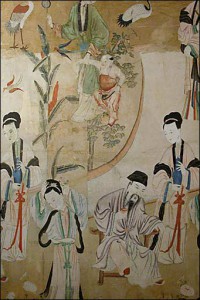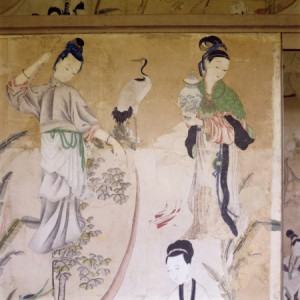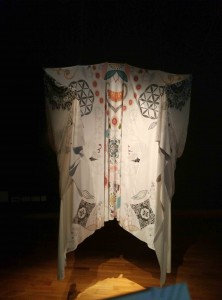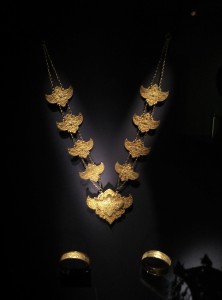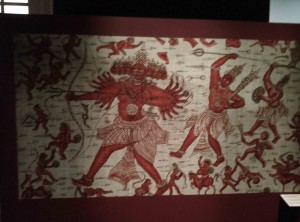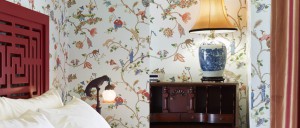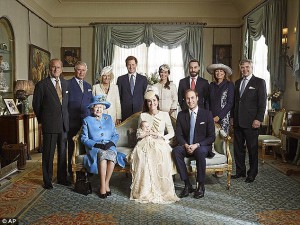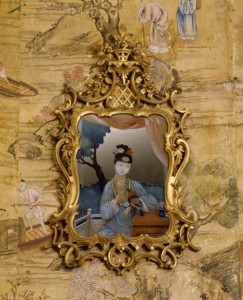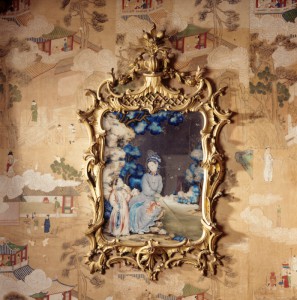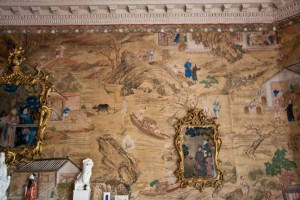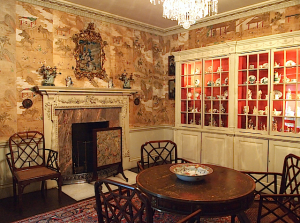Team 7 – Chinoiserie: Behind the Sheets
Fiona, Azmeera, Peng Cheng and Yu Wei
Wall Text:
Chinoiserie are Chinese products meant for exportation by the local manufacturers. In order, to suit the preferences of foreign buyers, Chinese craftsman added patterns that were not authentic to Chinese products at that time in order to seem more appealing. Due to wave of success in these Chinese export wares in Britain, there were many British craftsmen that imitated the Chinese style to produce “pseudo-Chinese” products, later called this style was coined Chinoiserie. These exports started in the 17th century and expanded dramatically after two decades into the 18th century.
During the 18th century, Baroque and Rococo Styles were also popular, thus it was inevitable that Chinoiserie has both style incorporated. It is uncertain that Chinoiserie had inspired some great Rococo styled furnishings, but the mix of east and west was evident in Chinoiserie products.
Chinoiserie often features extensive gilding and lacquering for furniture, the use of blue and white in the porcelain products. All their products usually are asymmetrical with oriental figures and motifs such as cranes, willows and clouds. John MacKenzie pointed out: ‘Chinoiserie, the construction of an imaginary Orient to satisfy a western vision of human elegance and refinement within a natural and architectural world of extreme delicacy, was as much a product of Chinese craftsmen as of the West’ These products allowed westerners who never entered China develop this idea of fantastic foreign land and fall in love with the imaginary that were crafted.
Even though the exoticism of Chinoiserie was distinct, it was more directed more for the interest of the female population. There were some products that were directly catered for women consumption as it was rumoured that traders often bring Chinoiserie as souvenirs for their wives from the Canton Trade.
However, Chinoiserie was never appreciated by the high society as art but instead viewed as a threat that may lower the standards of arts and culture. This was mostly due to the fact that Chinoiserie often lack depth in meaning and focus on the idea of surface beauty. Furthermore, Chinoiserie was a representation of meaningless vanity, indulgence, and luxury.
Our Gallery, Chinoiserie: Behind the Sheets takes visitors on a trip to unveil the more sophisticated and private side of Chinoiserie which was deemed as low cultured. Even though Chinoiserie was considered frivolous, it had nevertheless empowered woman with distinct set of physical product.
As women had less opportunities to be in contact of the real arts, men used their access of knowledge and appreciation of ancient art to stigmatise women to a low and deviant form of art that anyone, with or without education, can appreciate. In other words, Chinoiserie might be used as a social order to keep the existing powers of elites that controls artistic values. However, the general public had turned a blind eye that Chinoiserie was the stepping stone for the all genders to be in touch with art then soon politics and power of west and east. In a patriarchal society then, women was often seen as devious manipulators that can potentially fling society into disorder, people often forget that ideals and politics has nothing to do with gender in the first place. Thus, Chinoiserie played a huge role to blurring gender roles at that time.
